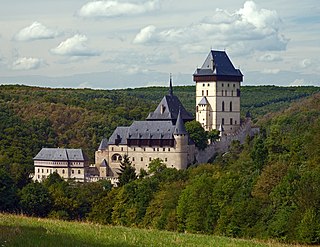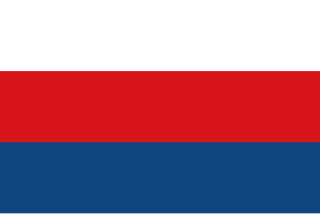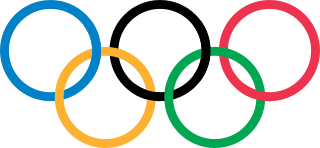
Bohemia is the westernmost and largest historical region of the Czech Republic. Bohemia can also refer to a wider area consisting of the historical Lands of the Bohemian Crown ruled by the Bohemian kings, including Moravia and Czech Silesia, in which case the smaller region is referred to as Bohemia proper as a means of distinction.

Czechoslovakia was a landlocked state in Central Europe, created in 1918, when it declared its independence from Austria-Hungary. In 1938, after the Munich Agreement, the Sudetenland became part of Nazi Germany, while the country lost further territories to Hungary and Poland. Between 1939 and 1945, the state ceased to exist, as Slovakia proclaimed its independence and Carpathian Ruthenia became part of Hungary, while the German Protectorate of Bohemia and Moravia was proclaimed in the remainder of the Czech Lands. In 1939, after the outbreak of World War II, former Czechoslovak President Edvard Beneš formed a government-in-exile and sought recognition from the Allies.

The military occupation of Czechoslovakia by Nazi Germany began with the German annexation of the Sudetenland in 1938, continued with the creation of the Protectorate of Bohemia and Moravia, and by the end of 1944 extended to all parts of Czechoslovakia.
With the collapse of the Austria-Hungary at the end of World War I, the independent country of Czechoslovakia was formed as a result of the critical intervention of U.S. President Woodrow Wilson, among others.

The Protectorate of Bohemia and Moravia was a partially-annexed territory of Nazi Germany that was established on 16 March 1939 after the German occupation of the Czech lands. The protectorate's population was mostly ethnic Czech.

The men's ice hockey tournament at the 1936 Winter Olympics in Garmisch-Partenkirchen, Germany, was the fifth Olympic Championship, also serving as the tenth World Championships and the 21st European Championships.

The Czech Republic men's national ice hockey team is the national ice hockey team of the Czech Republic. Since 2021, the team has been officially known in English as Czechia. It is one of the most successful national ice hockey teams in the world and a member of the so-called "Big Six", the unofficial group of the six strongest men's ice hockey nations, along with Canada, Finland, Russia, Sweden and the United States. It is governed by the Czech Ice Hockey Association. The Czech Republic has 85,000 male players officially enrolled in organized hockey.

The Czechoslovakia men's national ice hockey team was the national ice hockey team of Czechoslovakia, and competed from 1920 until 1992. The successor to the Bohemia national ice hockey team, which was a European power prior to World War I, the Czechoslovak national team first appeared at the 1920 Summer Olympics, two years after the creation of the state. In the 1940s, they established themselves as the best team in Europe, becoming the first team from the continent to win two World Championships. After the arrival of the Soviet Union on the international hockey scene in the 1950s, the Czechoslovaks regularly fought Sweden and Canada for silver and bronze medals, and sometimes beat the Soviets. In total, they won the gold medal six times.

The Bohemia national ice hockey team was the national ice hockey team of the Kingdom of Bohemia, a kingdom within Austria-Hungary. The team competed between 1909 and 1914 playing in four European Championships. Playing its last game in 1914, the team was succeeded by the Czechoslovakia men's national ice hockey team after the Kingdom of Bohemia was dissolved and became part of the First Czechoslovak Republic.

The Second Czechoslovak Republic, officially the Czecho-Slovak Republic, existed for 169 days, between 30 September 1938 and 15 March 1939. It was composed of Bohemia, Moravia, Silesia and the autonomous regions of Slovakia and Subcarpathian Rus', the latter being renamed Carpathian Ukraine on 30 December 1938.
The 1938–39 Czechoslovak First League, officially the Statni Liga, was the 15th season of the Czechoslovak First League, the first tier of league football in Czechoslovakia.
The 1939–40 Národní liga was the first season of the Národní liga, the first tier of league football in the Nazi Germany-annexed Protectorate of Bohemia and Moravia which had been part of Czechoslovakia until March 1939.
The 1940–41 Národní liga was the second season of the Národní liga, the first tier of league football in the Nazi Germany-annexed Protectorate of Bohemia and Moravia which had been part of Czechoslovakia until March 1939.
The 1941–42 Národní liga was the third season of the Národní liga, the first tier of league football in the Nazi Germany-annexed Protectorate of Bohemia and Moravia which had been part of Czechoslovakia until March 1939.
The 1942–43 Národní liga was the fourth season of the Národní liga, the first tier of league football in the Nazi Germany-annexed Protectorate of Bohemia and Moravia which had been part of Czechoslovakia until March 1939.
The 1943–44 Národní liga was the fifth season of the Národní liga, the first tier of league football in the Nazi Germany-annexed Protectorate of Bohemia and Moravia which had been part of Czechoslovakia until March 1939.
The 1940–41 Slovenská liga was the third season of the Slovenská liga, the first tier of league football in the Slovak Republic, formerly part of Czechoslovakia until the German occupation of the country in March 1939.

The Holocaust in Bohemia and Moravia resulted in the deportation, dispossession, and murder of most of the pre-World War II population of Jews in the Czech lands that were annexed by Nazi Germany between 1939 and 1945.

Arijský boj was a pro-Nazi Czech-language weekly tabloid newspaper published between May 1940 and May 1945 in the Protectorate of Bohemia and Moravia. Inspired by the Nazi newspaper Der Stürmer, the newspaper made antisemitism its main theme and was also critical of the Czechoslovak government-in-exile. Denunciations published by the newspaper contributed to the isolation of Jews during the first years of the Holocaust in Bohemia and Moravia.










